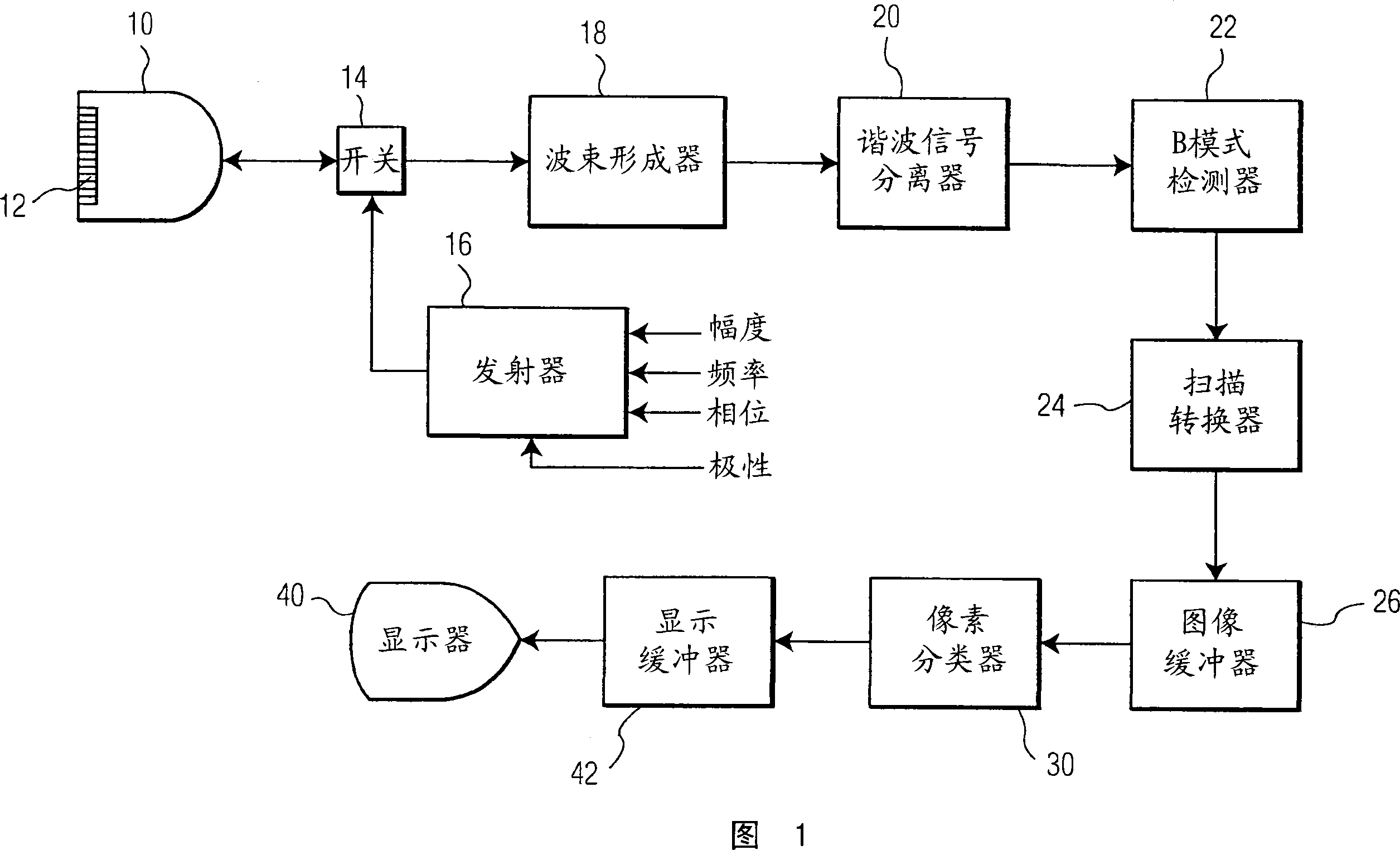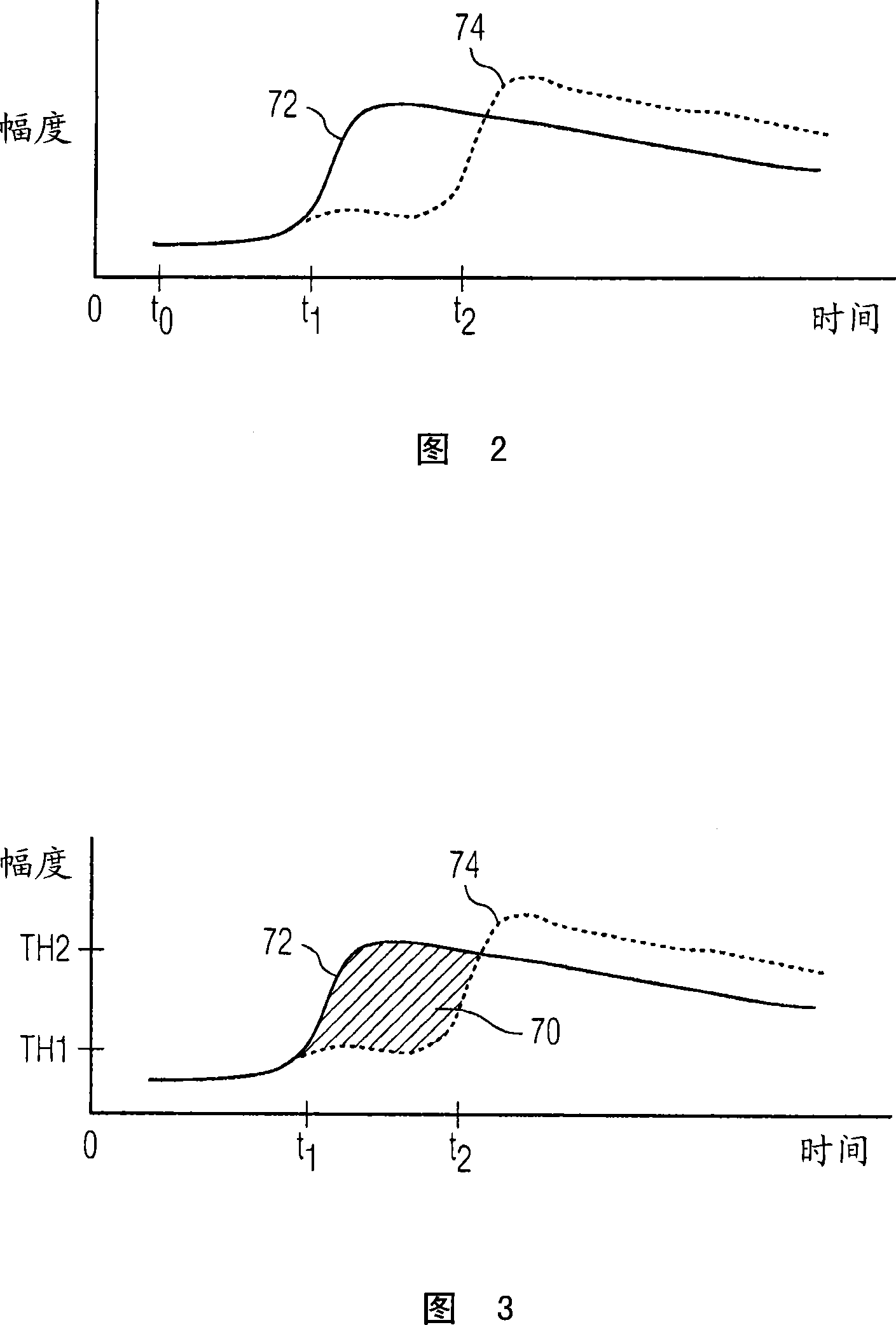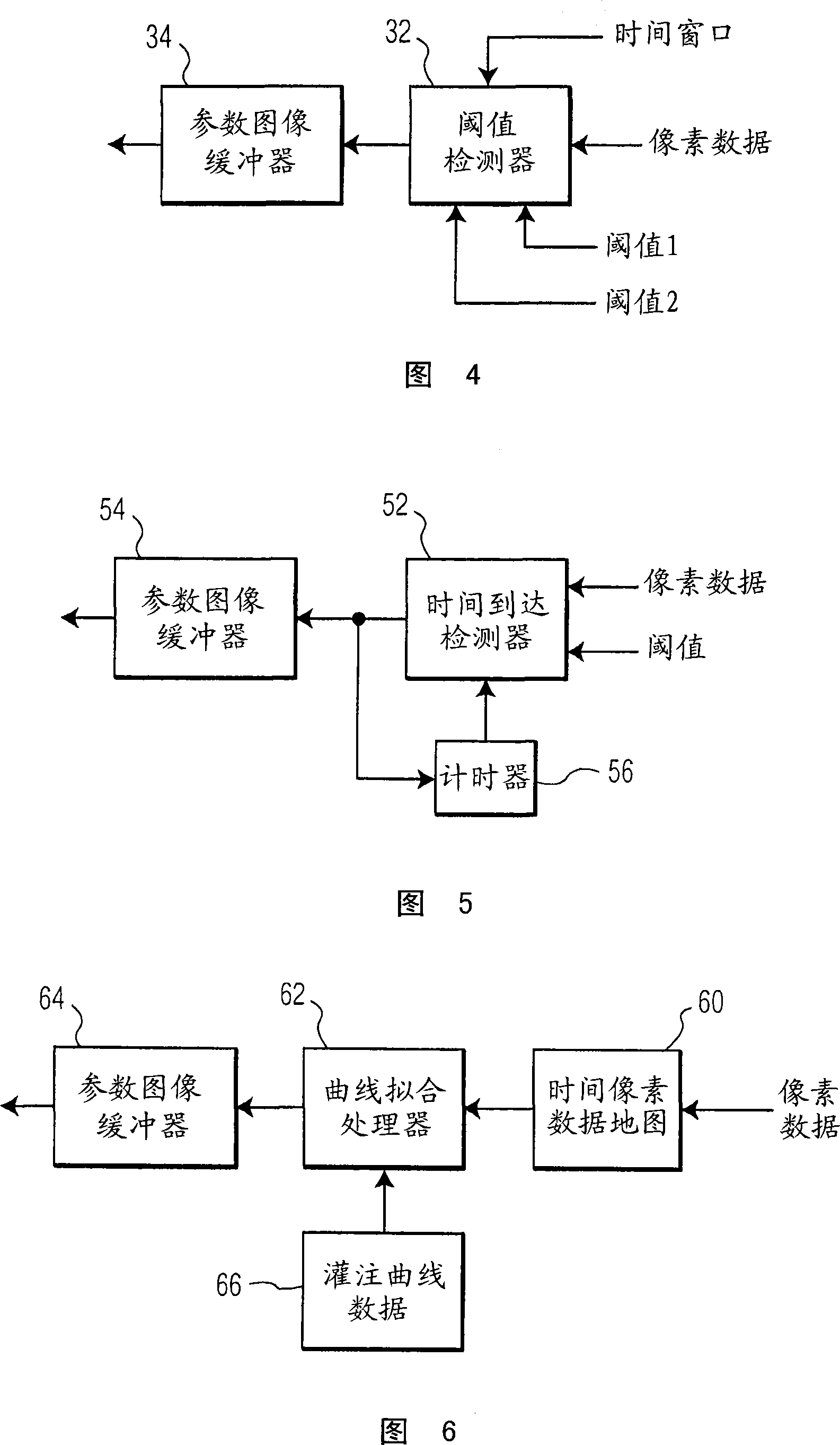Ultrasonic diagnostic imaging system and method for detecting lesions of the liver
An imaging system and ultrasonic diagnosis technology, which is applied in the fields of ultrasonic diagnosis, ultrasonic/acoustic/infrasonic diagnosis, infrasonic diagnosis, etc., can solve the problems of liver damage detection and diagnosis, etc.
- Summary
- Abstract
- Description
- Claims
- Application Information
AI Technical Summary
Problems solved by technology
Method used
Image
Examples
Embodiment Construction
[0013] Blood flow to the liver comes from two sources: the hepatic artery and the portal vein. The hepatic artery provides blood flow from the aorta. Blood flow through the portal vein comes from the inferior vena cava. The inferior vena cava in turn receives blood from the kidneys, which purify the flow provided by the aorta. Blood flow from the liver travels through the hepatic vein to the superior vena cava. The liver receives 20% of its total blood supply from the aorta and hepatic artery, while 80% of its blood supply comes from the inferior vena cava and portal vein.
[0014] As a result of this vasculature, when a bolus of contrast agent is injected into a blood vessel, it will first emerge in the liver via the hepatic artery. After being pumped from the heart into the aorta, a portion of the contrast agent flows into the hepatic artery and into the liver. But since only 20 percent of the blood supplied to the liver is provided through the hepatic artery, this early...
PUM
 Login to View More
Login to View More Abstract
Description
Claims
Application Information
 Login to View More
Login to View More - R&D
- Intellectual Property
- Life Sciences
- Materials
- Tech Scout
- Unparalleled Data Quality
- Higher Quality Content
- 60% Fewer Hallucinations
Browse by: Latest US Patents, China's latest patents, Technical Efficacy Thesaurus, Application Domain, Technology Topic, Popular Technical Reports.
© 2025 PatSnap. All rights reserved.Legal|Privacy policy|Modern Slavery Act Transparency Statement|Sitemap|About US| Contact US: help@patsnap.com



